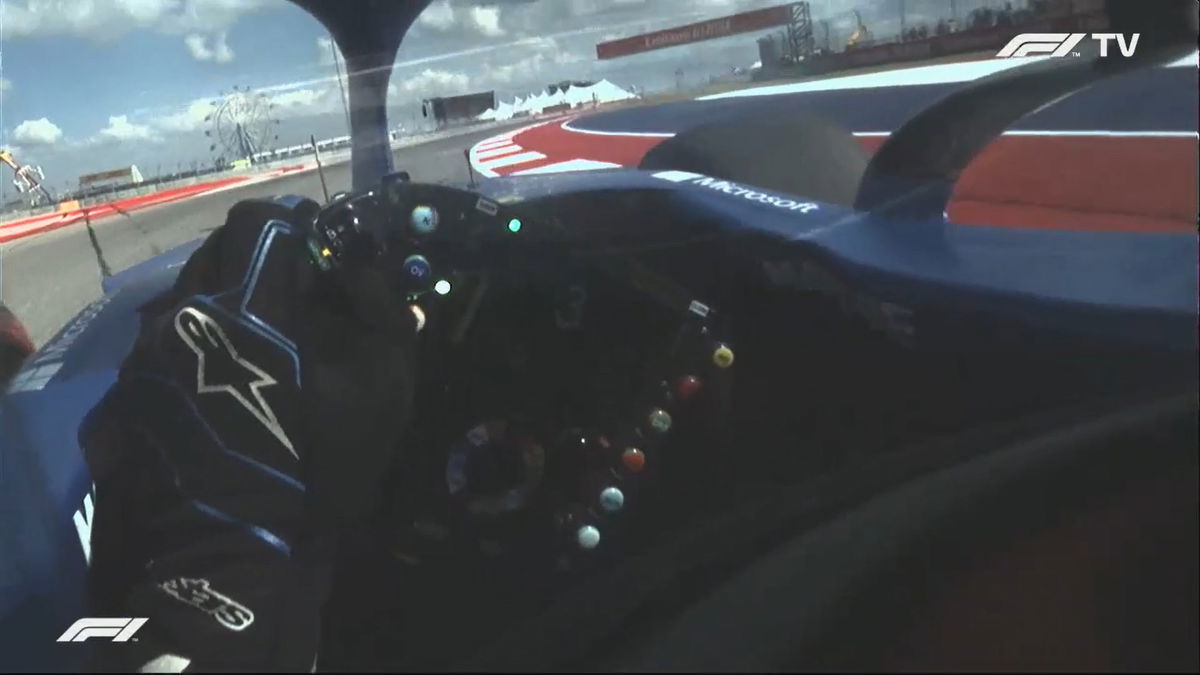

Over the years, F1 has introduced quite a few technologies into the sport, which includes interesting data analytics of a car’s track and tire performance and comparing them with that of other drivers. The latest addition to that list of appealing findings is the helmet camera.
Watch What’s Trending Now!
Since the Belgian Grand Prix, drivers have taken turns to produce a lap or two with a camera inside the visor of their crash helmets. This has usually happened during either FP1 or FP2 sessions, where the chances of such elements disrupting the driver are quite low.
Many drivers, including George Russell and Fernando Alonso, have sported the helmet cam so far. And the latest of all arriving from the other Alpine driver, Esteban Ocon, during the FP1 session of the United States GP.
ADVERTISEMENT
Warning: The Formula One helmet cam may cause dizziness 🤯 pic.twitter.com/mSTpzZnV53
— Joe Pompliano (@JoePompliano) October 22, 2021
There is no denying that fans have given a major thumbs up to this astonishing technological addition to the sport. But, a few might wonder, why is it receiving so much appreciation? Well, here’s why.
ADVERTISEMENT
Helmet cam – the best invention yet in F1?
Most of the cameras on an F1 car, including the front wing, rear wing, nose, and top of the engine cover, are pretty much fixed. Hence, the cameras go with the car, and any bumps or even elevation changes will hardly make an impact on the viewers.
However, that’s not the case with a helmet cam. Since the tiny camera is fixed inside the crash helmet, it provides the spectators with a driver’s eye view. The helmet cam clips can leave a few quite dizzy; That’s how exhilarating the view can be.
ADVERTISEMENT
Just mega! 💪🍿#ItalianGP 🇮🇹 @GeorgeRussell63 pic.twitter.com/YOVCzmfXwm
— Formula 1 (@F1) September 11, 2021
While F1 opted to use the helmet cam during practice sessions most of the time, that wasn’t the case at the Italian Grand Prix weekend. Monza had Russell sport the helmet cam for the sprint qualifying. And the fans were able to watch the start from the Briton’s viewpoint.
Top Stories
Adrian Newey’s Motorsport Masterpiece: RB17 vs Aston Martin Valkyrie, Which One Is Better?

Who Is Oscar Piastri’s Father, Chris Piastri? Co-Founder of Multibillion Dollar Automotive Company

3 Years After His Death, Niki Lauda’s Wife Brutally Disrespects Him to Initiate $32,000,000 Battle Against Own Children

Carlos Sainz & Ex Girlfriend Isa Hernaez Issue Contrasting Statements to Stir the Pot After Unexpected Breakup

Who Is Canadian F1 Billionaire Lawrence Stroll’s Daughter & Heiress Chloe Stroll?

Hence, this is indeed a step forward, and there is a massive chance that F1 will look to introduce this helmet cam view during the main race from the start of the 2022 season. So, will the teams and drivers oblige to it? Only time will tell.
ADVERTISEMENT
Watch Story: Lewis Hamilton’s Incredible Car Collection
ADVERTISEMENT
ADVERTISEMENT
ADVERTISEMENT

